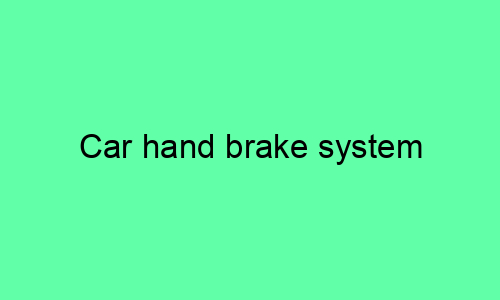Car Hand Brake System
Introduction
The hand brake, also known as the parking brake or emergency brake, is a mechanical device used to keep a vehicle stationary when parked. It is typically operated by a lever or pedal, and works by engaging a set of brake shoes or pads against the inside of the rear brake drums or rotors.
Types of Hand Brakes
There are two main types of hand brakes:
*
*
How a Hand Brake Works
When the hand brake is engaged, it activates the brake shoes or pads, which press against the inside of the rear brake drums or rotors. This creates friction, which slows down the wheels and keeps the vehicle stationary.
When to Use the Hand Brake
The hand brake should be used whenever the vehicle is parked, even if it is in gear. This is because the hand brake is a more reliable way to keep the vehicle stationary than the parking gear, which can be accidentally disengaged.
The hand brake can also be used in an emergency to stop the vehicle if the regular brakes fail.
Maintaining the Hand Brake
The hand brake should be inspected and adjusted regularly to ensure that it is working properly. The brake shoes or pads should be replaced when they become worn, and the brake fluid should be flushed and replaced every few years.
Conclusion
The hand brake is an important safety feature that helps to keep your vehicle stationary when parked. It is important to use the hand brake properly and to maintain it regularly to ensure that it is working properly.






